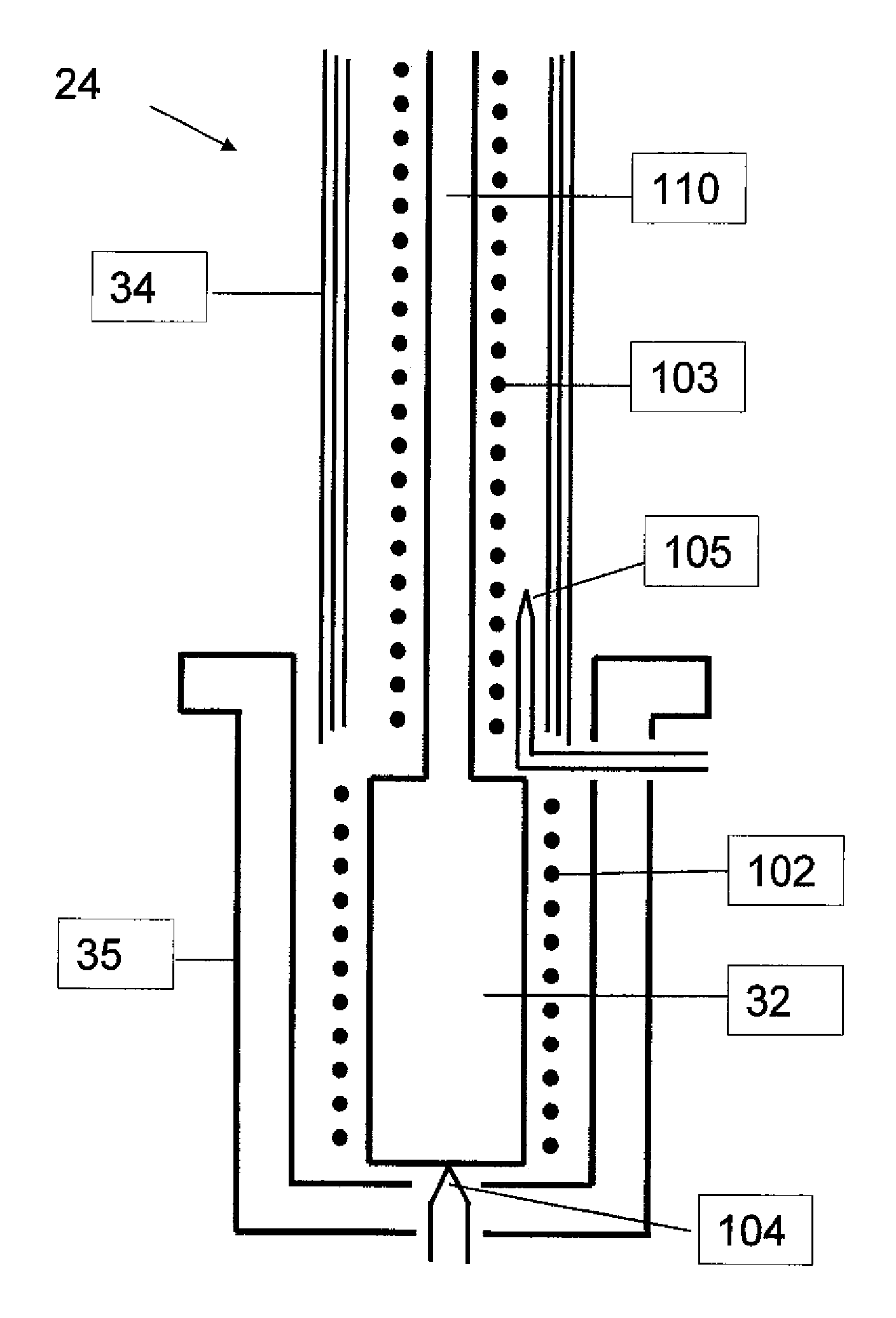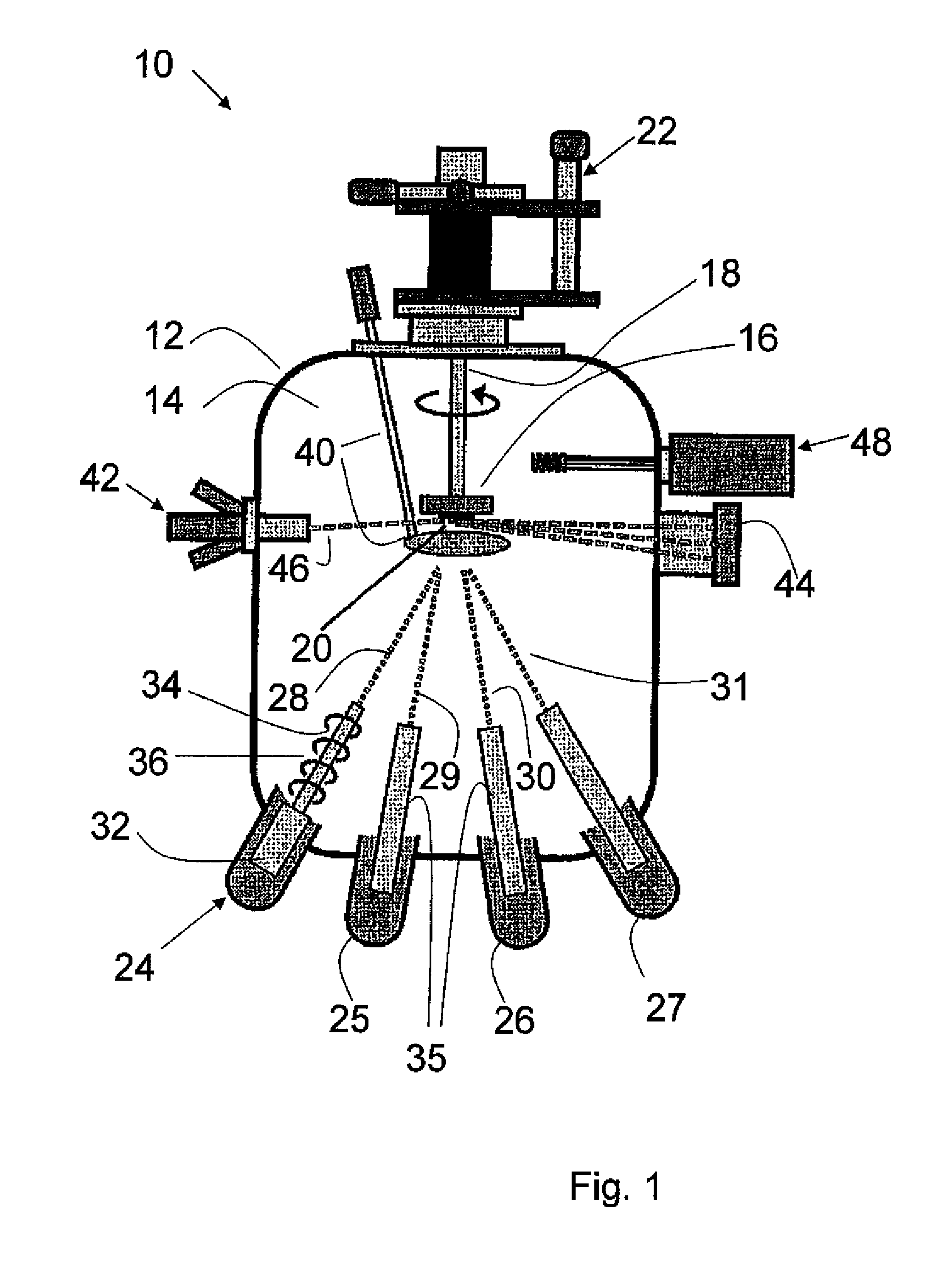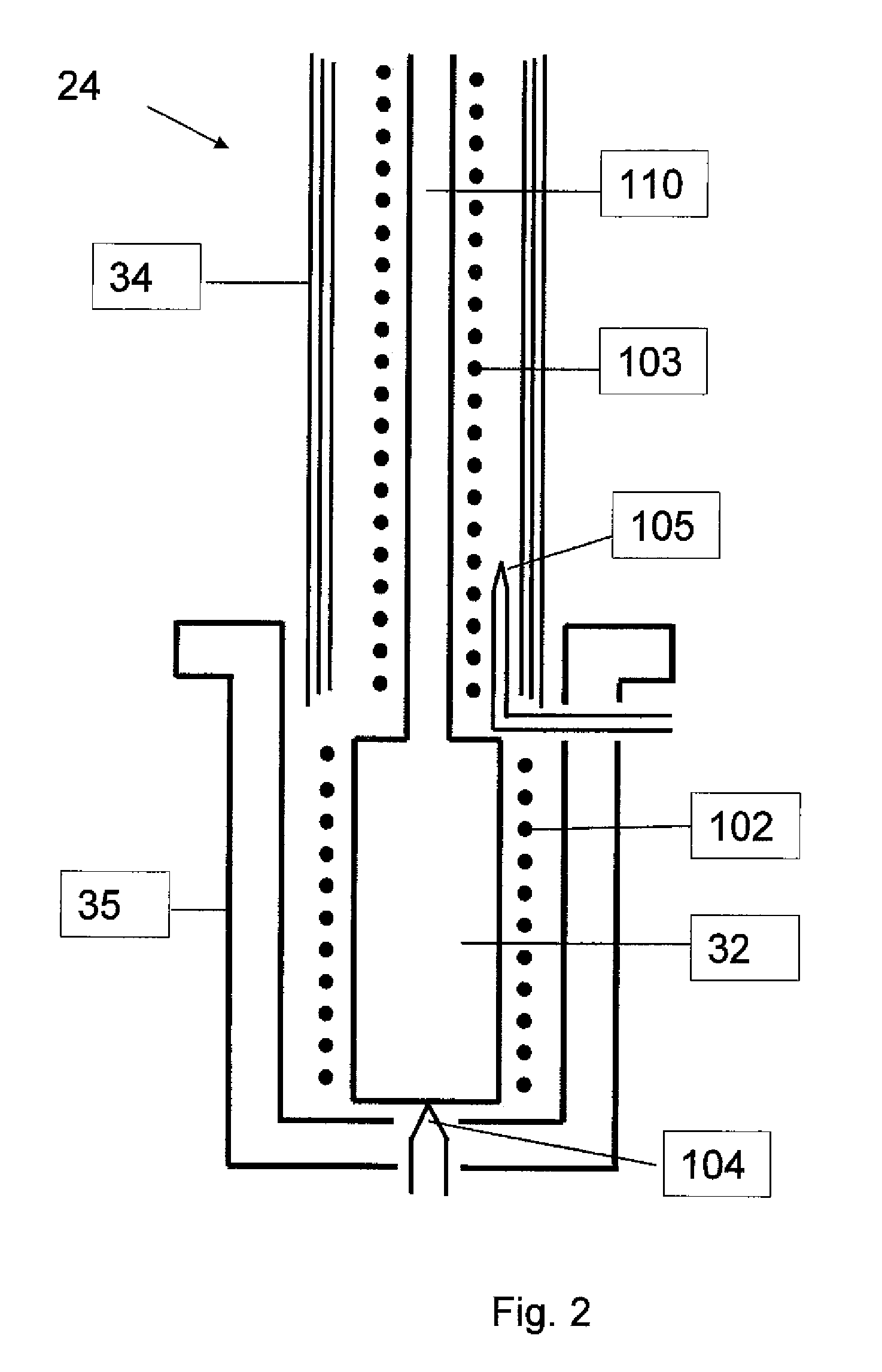Methodology for forming pnictide compositions suitable for use in microelectronic devices
a technology of microelectronic devices and compositions, which is applied in the direction of crystal growth process, polycrystalline material growth, coatings, etc., can solve the problems of poor photovoltaic behavior of devices, poor film quality, and difficulty in preparing n-type zinc phosphide, and achieves excellent control of growth rate and composition, enhances the safety of using deposition strategies, and is used more easily and effectively
- Summary
- Abstract
- Description
- Claims
- Application Information
AI Technical Summary
Benefits of technology
Problems solved by technology
Method used
Image
Examples
example 1
Growth of Zn3P2 Thin Films from a Zn3P2 Compound Source and Supplemental Zn Source
[0124]An undoped GaAs(001) growth substrate was first etched in H2SO4:H2O2:H2O (4:1:100 vol) for two minutes followed by an HCl:H2O (1:3) etch for an additional two minutes, then rinsed in DI water for 20 to 30 seconds and nitrogen blow-dried. The substrate was attached to a molybdenum sample holder using copper-beryllium clips. A small area of lithographic mask was applied to the surface of the wafer which could later be removed by acetone after growth for determining film thickness. The substrate holder was then immediately placed under vacuum.
[0125]Within a molecular beam epitaxial growth chamber, the sample was first annealed at 300° C. for 30 minutes to 1 hour to outgas any water or carbon contaminents followed by a higher temperature anneal at 450° C. which facilitated reconstruction of the GaAs surface. The substrate was allowed to cool to 200° C., during which time both the Zn3P2 compound sourc...
example 2
Growth of ZnxPy Thin Films from a Zn3P2 Compound Source and Supplemental Zn Source
[0126]Several experiments were conducted in the exact same manner as outlined in Example 1 except that the temperature of the zinc metal effusion cell was set to 320° C., 325° C., 330° C., 335° C., 340° C., 350° C., and 360° C., respectively. Data is shown in FIGS. 6A and 6B. FIG. 6a shows the influence of additional zinc source flux on growth rate of zinc phosphide thin films. A clear increase in growth rate was observed as the temperature of the zinc source was increased past 330° C. Films grown with the zinc source below 330° C. were found to be amorphous in nature. Crystalline Zn3P2 films were obtained for zinc source temperatures at or greater than 300° C. Film thicknesses were measured by profilometry. FIG. 6b shows the influence of additional zinc metal flux on the stoichiometry of grown films. Films grown without the additional zinc source were found to be phosphorus rich. A perfect Zn3P2 stoic...
example 3
Control of P4 / P2 Ratio in the Flux Via Temperature Control in the Thermal Cracking Zone Using a Zn3P2 Compound Source
[0127]In a molecular beam epitaxial chamber, the source temperature for sublimation of Zn3P2 was heated at a rate of 12° C. per minute to 350° C. and held at that temperature. The cracker temperature in the decomposition zone was adjusted between 400° C. and 1000° C. and the partial pressures of tetramer and dimer species were determined in situ using a quadrapole mass-spectrometer located within the effusion cell beam path. Data is shown in FIGS. 7a and 7b.
[0128]FIG. 7a shows beam equivalent pressure (BEP) of the Zn3P2 compound source effusion cell as a function of source temperature for a thermal treatment decomposition temperature of 1000° C. BEP was determined using a standard nude ionization gauge located within the effusion cell beam path and is uncorrected for ionization sensitivities of Zn and P2 vapor species. Chamber background pressures (open circles) were...
PUM
| Property | Measurement | Unit |
|---|---|---|
| temperatures | aaaaa | aaaaa |
| temperature | aaaaa | aaaaa |
| temperatures | aaaaa | aaaaa |
Abstract
Description
Claims
Application Information
 Login to View More
Login to View More - R&D
- Intellectual Property
- Life Sciences
- Materials
- Tech Scout
- Unparalleled Data Quality
- Higher Quality Content
- 60% Fewer Hallucinations
Browse by: Latest US Patents, China's latest patents, Technical Efficacy Thesaurus, Application Domain, Technology Topic, Popular Technical Reports.
© 2025 PatSnap. All rights reserved.Legal|Privacy policy|Modern Slavery Act Transparency Statement|Sitemap|About US| Contact US: help@patsnap.com



